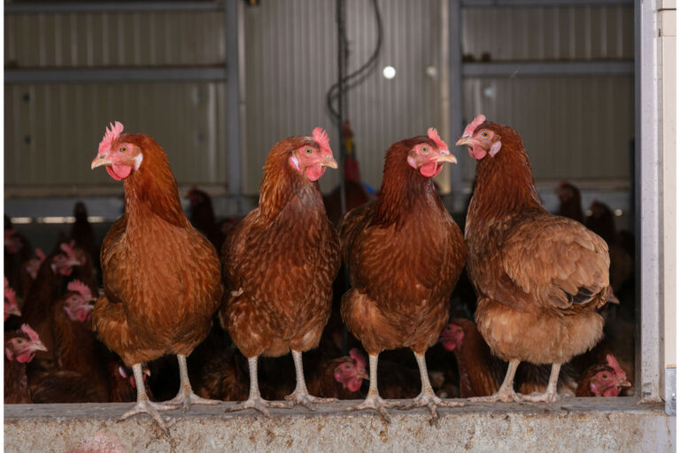November 27, 2025 | 22:30 GMT +7
November 27, 2025 | 22:30 GMT +7
Hotline: 0913.378.918
November 27, 2025 | 22:30 GMT +7
Hotline: 0913.378.918

Photo: Canva.
The additional information for the £22 million grant, which aims to enhance animal health and welfare benefits, has been provided following the first stage of applications, which closed on 18 September.
The grant, which is available for housing for laying hens and pullets, covers the replacement of upgrading/refurbishment of existing housing, which includes a number of mandatory requirements, including the need to have a veranda as part of the project.
Mechanical ventilation and high welfare multi-tier systems
Comprehensives projects for both pullets and laying hens should also include mechanical ventilation and high welfare multi-tier systems. Mechanical ventilation allows temperature and humidity to be effectively managed, especially during periods of extreme heat.
High welfare multi-tier systems improve the physical strength of the birds, zone active and inactive behaviours and increased the birds’ potential to escape stressors and exert choice, according to the guidance.
Verandas
The fund can also be used to add a veranda onto existing laying hen or pullet housing, referred to as a ‘veranda-only’ projects.
The aims of the successfully funded project are to:
Requirements
The National Farmers’ Union has put out the following information following the updated guidance.
Eligible birds – The RPA states that the term ‘laying hen’ refers to a female domestic chicken over 17 weeks of age kept for table egg production. The term ‘pullet’ refers to a female domestic chicken less than 17 weeks of age being reared for table egg production.
Who is eligible? A producer can apply for a grant if they are an existing commercial egg producer or pullet rearer. They must be a registered keeper of 1,000 or more birds. These must be on site when you fill in the online checker or have been within the last 6 months. Any buildings you build or upgrade with money from the grant must be located in England.
Land occupation – A producer must either own the land they are building on or have a tenancy agreement for the land until 5 years after the project is complete. There is further information set out in the guidance where a tenancy does not extend that long.
Eligible buildings – The rules state that housing must provide a high level of biosecurity, excellent ambient environment, and maximise the space available by ensuring full and safe accessibility to all birds. For comprehensive projects the housing should include, among other things, mechanical ventilation and high welfare multi-tier systems and a roof suitable for solar photovoltaic (PV) panels. Also, that any laying hen housing should include a veranda, where outside space is permitted.
Funding above the legal minimum – All projects must meet the legal requirements for the keeping of laying hens. This grant offers funding to help farmers deliver higher standards for health and welfare and should not be used to help meet only the minimum standards.
Not about flock expansion – This grant scheme cannot be used to directly fund flock expansion by increasing stocking capacity. Because of this, comprehensive projects will receive a lower intervention rate for aviary system costs (based on starting flock size).
If you are replacing a colony cage system, you may wish to maintain your egg production capacity by using a combination of projects. For example, both a refurbishment and a new-build project. The RPA will fund up to 40% of the eligible costs up to the maximum grant amount if the final stocking capacity of the project does not exceed that of the colony system. If at project completion, the project exceeds the starting colony capacity, then the amount of grant funding available will be worked out pro rata. You will need to fill in one application per project. A single maximum grant amount will cover both projects.
You can keep the old building if you are replacing existing laying hen or pullet housing with a new building. But you must not use the old building for poultry housing or egg production after you complete the project.
(Poultryworld)

(VAN) A new study reveals how the simultaneous effects of ocean acidification, salinity and loss of oxygen are making the world more fragile.

(VAN) Hopes are growing that the creation of the first 3D turkey gut model could be a turning point in the battle against the virulent blackhead disease.

(VAN) Tyson, America’s biggest meat supplier, plans to shutter one of its largest beef processing plants as the industry continues to struggle with low cattle supplies and political pressure from Washington.

(VAN) New FAO study shows how digital solutions are empowering farmers and fishers to prevent losses and build resilient agrifood systems.

(VAN) Brazil's COP30 presidency pushed through a compromise climate deal on Saturday that would boost finance for poor nations coping with global warming but that omitted any mention of the fossil fuels driving it.

(VAN) Poultry farmers in the UK have been warned that they could face one of the worst winters yet for bird flu.

(VAN) Prices of main-crop paddy have risen sharply, with jasmine rice hitting 16,100 baht per tonne — the highest level in years.